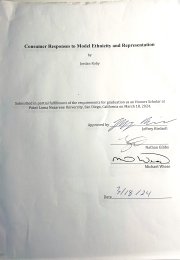- Resource Types
- Resource Languages
- Institutional Repository
 Visit the home page
Visit the home page
About Site Language
WHDL is viewable in multiple languages. Use the pull-down menu to select a language to view the site.
I changed my language, but I’m still seeing resources in the other languages?
If a resource or text has not been translated into your selected language, it will appear in the initially added language. We are always looking for help translating these resources. If you can help, contact us!
WHDL - 00020170


click to copy
Roby, J (2024). Consumer Responses to Model Ethnicity and Representation .
Roby, JordanConsumer Responses to Model Ethnicity and Representation . , 2024
Roby, JordanConsumer Responses to Model Ethnicity and Representation . , 2024
Roby, JordanConsumer Responses to Model Ethnicity and Representation . , 2024
Previous research has shown that people of color have been misrepresented in advertisements through stereotypic portrayals. This research paper focuses on those stereotypical portrayals within ads, specifically looking at whether individuals are sensitive to representation and if it impacts the quality of the ad. One hundred eighty-nine participants ages 18-24 years old completed a questionnaire based on the Prototypicality of Television Portrayals scale to determine if a stereotypic basketball condition or non-stereotypic gaming condition of an African American male in an energy drink advertisement was perceived as a better person. Results showed that the participants perceived the African American model in the basketball condition to be a better individual than in the gaming condition, which led to rejecting my hypothesis that the quality of the ad is impacted by the use of ethnic stereotypes. These results correlate to the Expectancy Violation Theory, in which the participant violates the expectation of the gaming condition to perceive the model as a better person. Furthermore, the 2nd study looks into the brand attitude, advertisement attitude, and purchase intention of the consumer and finds that there is no impact on the marketing metrics within the use of stereotypes or no stereotypes in the advertisements.
79 Resources
This collection contains all PLNU Undergraduate Honors Projects completed during the span beginning with the 2020-2021 academic year and ending with the most recent academic year, provided they were submitted to the library with all necessary permissions.
2025
2014
2011
2003
2001
2006
2021
2011
2007
2020
2014
2023
2011
2011
2021
2018
2007